 As usual, I have to pause for a little while to take all that in. I kind of wish this show aired on a Tuesday or something, because it’s not the sort that should be covered on a day when I’m writing about a bunch of other series too (including two of the best of the season) – and that’s assuming I get to another stalwart, Ushio to Tora, the day before. Concrete Revolutio is a very fun series to write about, but it’s not as easy one in the sense that you can’t just knock out a few paragraphs and pop a waffle in the toaster – it’s a serious show that merits serious discussion.
As usual, I have to pause for a little while to take all that in. I kind of wish this show aired on a Tuesday or something, because it’s not the sort that should be covered on a day when I’m writing about a bunch of other series too (including two of the best of the season) – and that’s assuming I get to another stalwart, Ushio to Tora, the day before. Concrete Revolutio is a very fun series to write about, but it’s not as easy one in the sense that you can’t just knock out a few paragraphs and pop a waffle in the toaster – it’s a serious show that merits serious discussion.
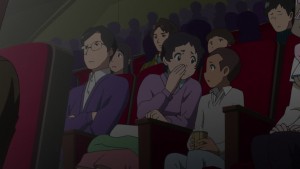 Make no mistake about it – we have met the enemy, and it’s Teito Advertisements. Aikawa Shou’s contempt for Teitou is palpable here – as not just a writer but one consumed with politics and history, you can practically see the venom dripping off his pen as he writes about this ad man manipulating public opinion. Aikawa is no impartial observer here, but as usual he’s very grounded in Japanese history – he obviously sees a lot of the history of the Liberal Democratic Party and their stranglehold on Japanese public affairs in this story. But to his credit he doesn’t make Teito himself an incompetent at least – he’s a very capable and devious man, and skilled at moving the pieces from behind the curtain. As a big bad, Teito is a pretty formidable guy.
Make no mistake about it – we have met the enemy, and it’s Teito Advertisements. Aikawa Shou’s contempt for Teitou is palpable here – as not just a writer but one consumed with politics and history, you can practically see the venom dripping off his pen as he writes about this ad man manipulating public opinion. Aikawa is no impartial observer here, but as usual he’s very grounded in Japanese history – he obviously sees a lot of the history of the Liberal Democratic Party and their stranglehold on Japanese public affairs in this story. But to his credit he doesn’t make Teito himself an incompetent at least – he’s a very capable and devious man, and skilled at moving the pieces from behind the curtain. As a big bad, Teito is a pretty formidable guy.
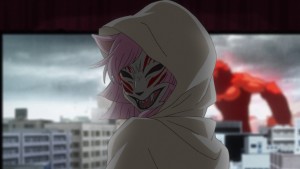 Essentially, the problem with postwar Japan in political terms as I see it (and I would say Aikawa is on the same page) is that voters are generally persuaded to vote against their enlightened self-interest. This is, of course, not a problem remotely limited to Japan. But there seems a special strain of it here, where the LDP has governed effectively uninterrupted for seven decades. Many Japanese political scientists theorize that the Japanese are, as a rule, simply too orderly and obedient by nature – dissent doesn’t come naturally to them, which is why the student demonstrations of the 60’s and 70’s (the canvas on which Concrete Revolutio is painted) represented such a massive shock to the system. And why there’s no tradition of a muckraking free press in Japan the way there is (well, used to be) in the West.
Essentially, the problem with postwar Japan in political terms as I see it (and I would say Aikawa is on the same page) is that voters are generally persuaded to vote against their enlightened self-interest. This is, of course, not a problem remotely limited to Japan. But there seems a special strain of it here, where the LDP has governed effectively uninterrupted for seven decades. Many Japanese political scientists theorize that the Japanese are, as a rule, simply too orderly and obedient by nature – dissent doesn’t come naturally to them, which is why the student demonstrations of the 60’s and 70’s (the canvas on which Concrete Revolutio is painted) represented such a massive shock to the system. And why there’s no tradition of a muckraking free press in Japan the way there is (well, used to be) in the West.
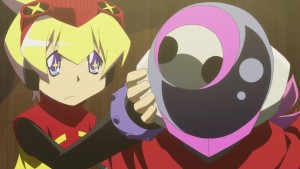 The nexus of Teito’s campaign of lies is their anti-superhuman propaganda film – like the most effective propaganda films grounded in enough truth to make the lies much more believable. The irony here, of course, is that for Jirou it’s this fiction which finally pulls the caul from his eyes about his own history – it takes the serial liar Teito’s greatest lie to show Jirou the truth (most painfully, perhaps, the truth of what happened in the Rainbow Knight incident). As usual, this is massively dense and complicated stuff and it’s not so easy to be sure one has all the parts in order. But it seems a remnant of Clause exists inside all of those helmets – and it shows people the superhuman of their ideals. But in fact it’s Jirou’s own ideals driving things – his childish ideals, a remnant of the Jirou who saw superhumans as the ones to bring justice to everyone in the world, especially the weak and powerless.
The nexus of Teito’s campaign of lies is their anti-superhuman propaganda film – like the most effective propaganda films grounded in enough truth to make the lies much more believable. The irony here, of course, is that for Jirou it’s this fiction which finally pulls the caul from his eyes about his own history – it takes the serial liar Teito’s greatest lie to show Jirou the truth (most painfully, perhaps, the truth of what happened in the Rainbow Knight incident). As usual, this is massively dense and complicated stuff and it’s not so easy to be sure one has all the parts in order. But it seems a remnant of Clause exists inside all of those helmets – and it shows people the superhuman of their ideals. But in fact it’s Jirou’s own ideals driving things – his childish ideals, a remnant of the Jirou who saw superhumans as the ones to bring justice to everyone in the world, especially the weak and powerless.
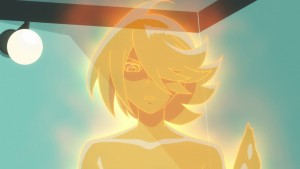 There comes a time in life when one must set aside childish things – or so the conventional wisdom goes. Jirou has been led around by the child inside himself every bit as much as those influenced by the Claude helmets, and it’s led him to this path of extremism and isolation. But is what’s necessary for a happy ending here really for Jirou to set aside idealism and embrace the hard realism of adulthood? This search for an “ideal” justice – one which is consistent and transcends situation and individual bias – is fundamental to the struggle inside Concrete Revolutio.
There comes a time in life when one must set aside childish things – or so the conventional wisdom goes. Jirou has been led around by the child inside himself every bit as much as those influenced by the Claude helmets, and it’s led him to this path of extremism and isolation. But is what’s necessary for a happy ending here really for Jirou to set aside idealism and embrace the hard realism of adulthood? This search for an “ideal” justice – one which is consistent and transcends situation and individual bias – is fundamental to the struggle inside Concrete Revolutio.
 Poor Jirou – he has so much weight on his shoulders. What a brilliant and fascinating riff on the idea of “Little Boy” (I would love to have been a fly on the wall at the izakaya where Aikawa-sensei was struck with the inspiration). As outsiders we can only imagine the impact on the Japanese psyche of the detonation of the atomic bombs – an impact only Japan has endured in all of human history. It asserts itself often and sometimes brilliantly in Japanese manga, from Barefoot Gen to Togashi’s Miniature Rose, but this is a wildly creative take on it.
Poor Jirou – he has so much weight on his shoulders. What a brilliant and fascinating riff on the idea of “Little Boy” (I would love to have been a fly on the wall at the izakaya where Aikawa-sensei was struck with the inspiration). As outsiders we can only imagine the impact on the Japanese psyche of the detonation of the atomic bombs – an impact only Japan has endured in all of human history. It asserts itself often and sometimes brilliantly in Japanese manga, from Barefoot Gen to Togashi’s Miniature Rose, but this is a wildly creative take on it.
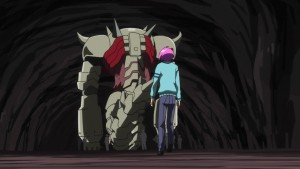 I was very pleased to see Fuurouta establish his role as more than a kawaii comic accessory to the story here. He is, as Jaguar-san reminds us, the one who reminds Jirou of what he’s fighting for – of what’s important. Fuurouta-kun endured his own death of idealism in brutally harsh terms, but he retains the essence of who he is – forever a child, which can be viewed as either a curse or a gift. Next week, it seems, will be the turn of Emi-san to stake out her role in the existential drama – and to truly show us why the promise she extracted from Jirou was that he “love her forever”.
I was very pleased to see Fuurouta establish his role as more than a kawaii comic accessory to the story here. He is, as Jaguar-san reminds us, the one who reminds Jirou of what he’s fighting for – of what’s important. Fuurouta-kun endured his own death of idealism in brutally harsh terms, but he retains the essence of who he is – forever a child, which can be viewed as either a curse or a gift. Next week, it seems, will be the turn of Emi-san to stake out her role in the existential drama – and to truly show us why the promise she extracted from Jirou was that he “love her forever”.



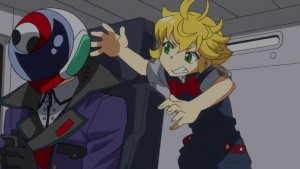
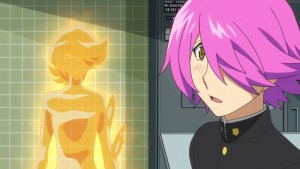
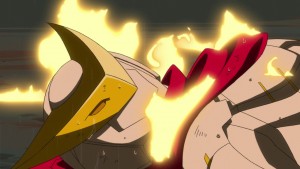
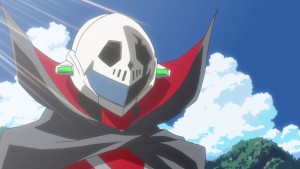
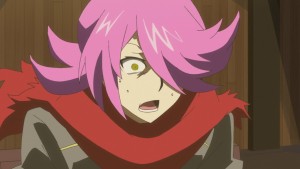
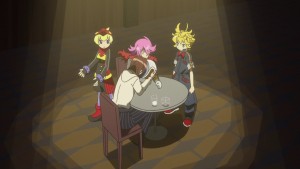
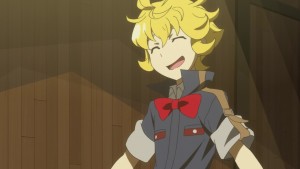
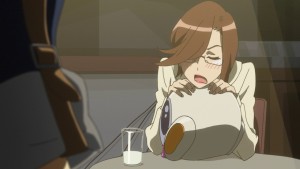
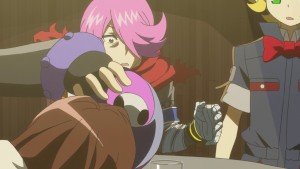
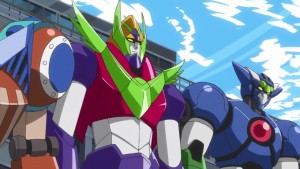
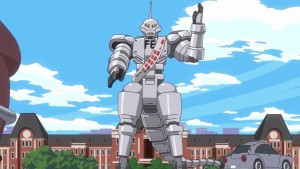
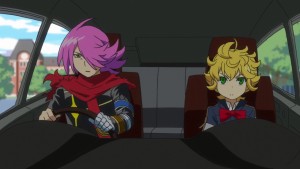

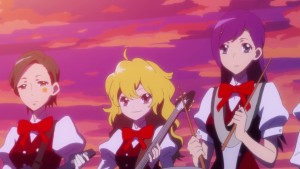
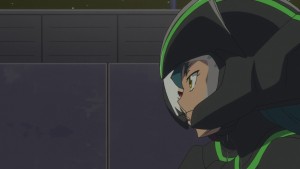

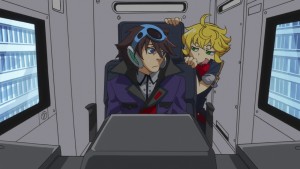

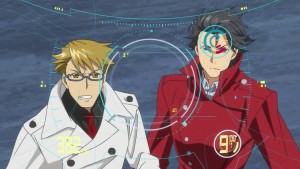


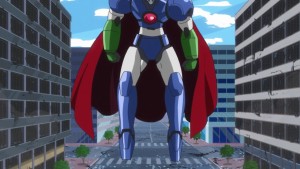


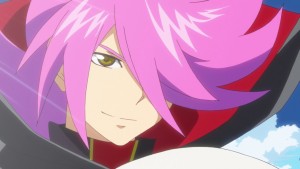
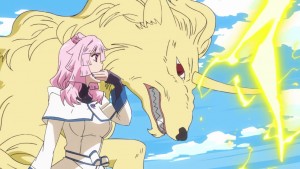
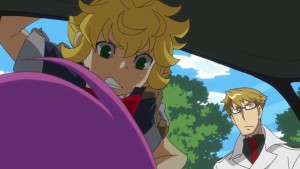
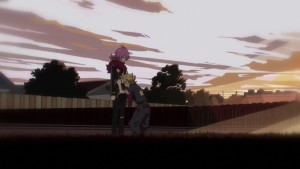
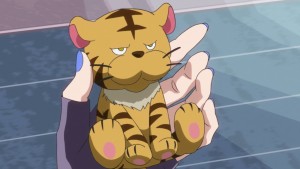
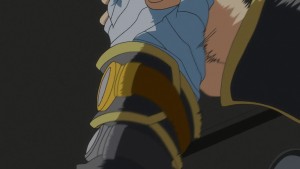
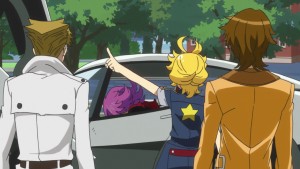
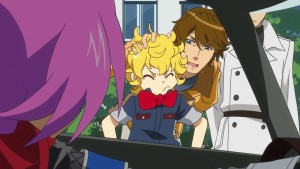
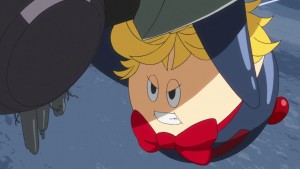

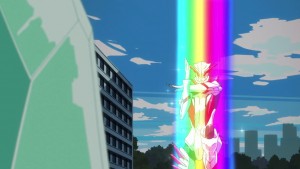
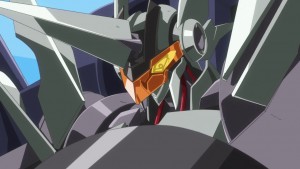
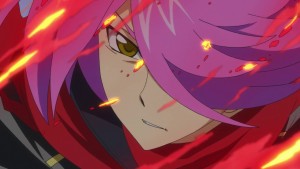

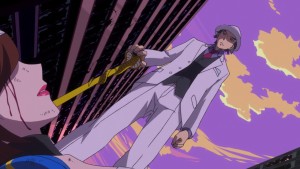
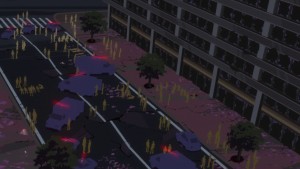

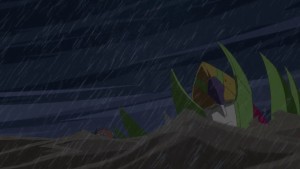
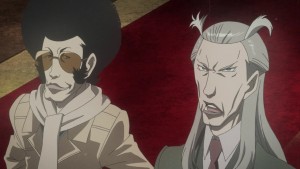
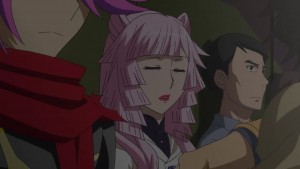
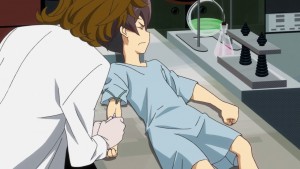
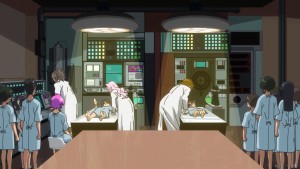
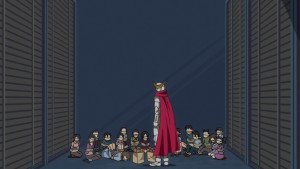
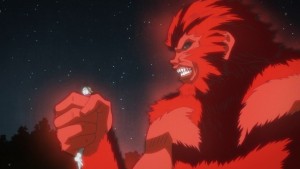
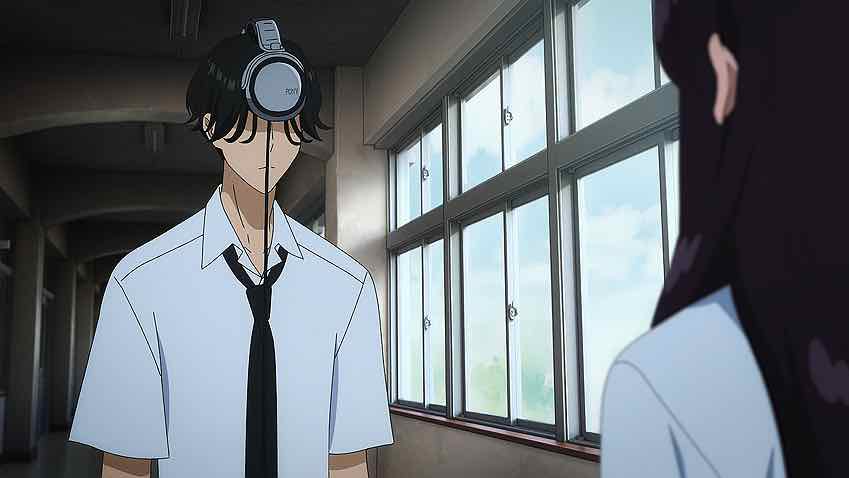
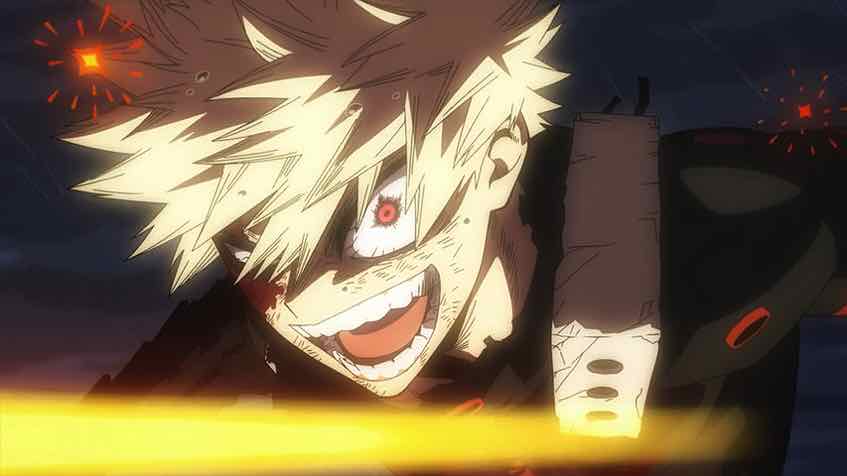
DP
June 5, 2016 at 4:30 amI love Shou Aikawa – the acidity of his pen, and the rarity of bringing politics into anime – but I have to say this show is a bloody mess. “Dense” is a charitable description of the story; mine would be “convoluted.” The characters are all just too undercooked and weightless to bear the burden that the hyper- and overly-complex narrative is placing upon them. I admire the attempt, and maybe it will all somehow come together by the end, but right now, Concrete Revolutio is the archetypal “reach exceeds its grasp” kind of show.
Jonny M
June 5, 2016 at 12:22 pmCouldn’t disagree more.
I’m not sure what kind of metric you’re using to imply that the show’s plot is ‘convoluted’ – it’s very straightforward stuff, it’s just conveyed in a way that seems initially confusing. This is a show that’s been working from a very specific set of themes since episode one, and every episode’s built upon those themes while using its characters as a vehicle to explore them, including its vast array of episodic characters. Definitely don’t think the recurring characters are undercooked, either; Jiro’s one of the most fascinating protagonists I’ve seen in a long time and the narrative has no problem with building him up and breaking him back down again. All of the other main characters have had a focus episode that directly challenged their worldview and way of thinking except for Emi, who seems to be getting that next episode.
Earthling Zing
June 6, 2016 at 3:56 amGreat episode, I thought the decision of contrasting the tragedy of Rainbow Knight with what’s happening in Teito’s cinema was really smart. For me the attraction of this series has always been the themes and not the characters, the highlights so far for me are that Birdmen episode and Ningen Man.